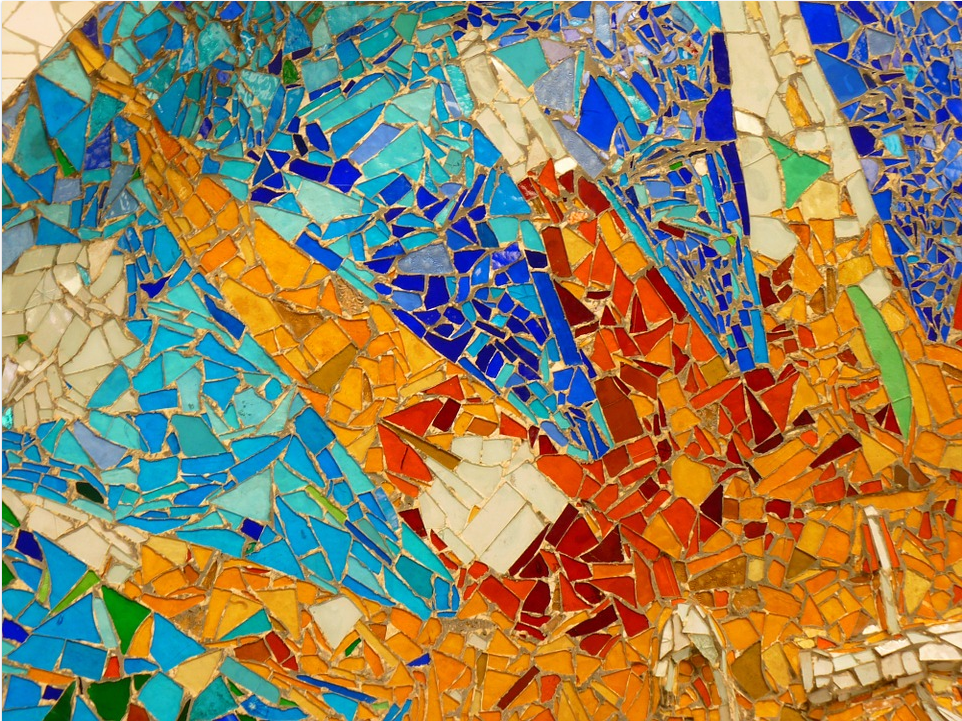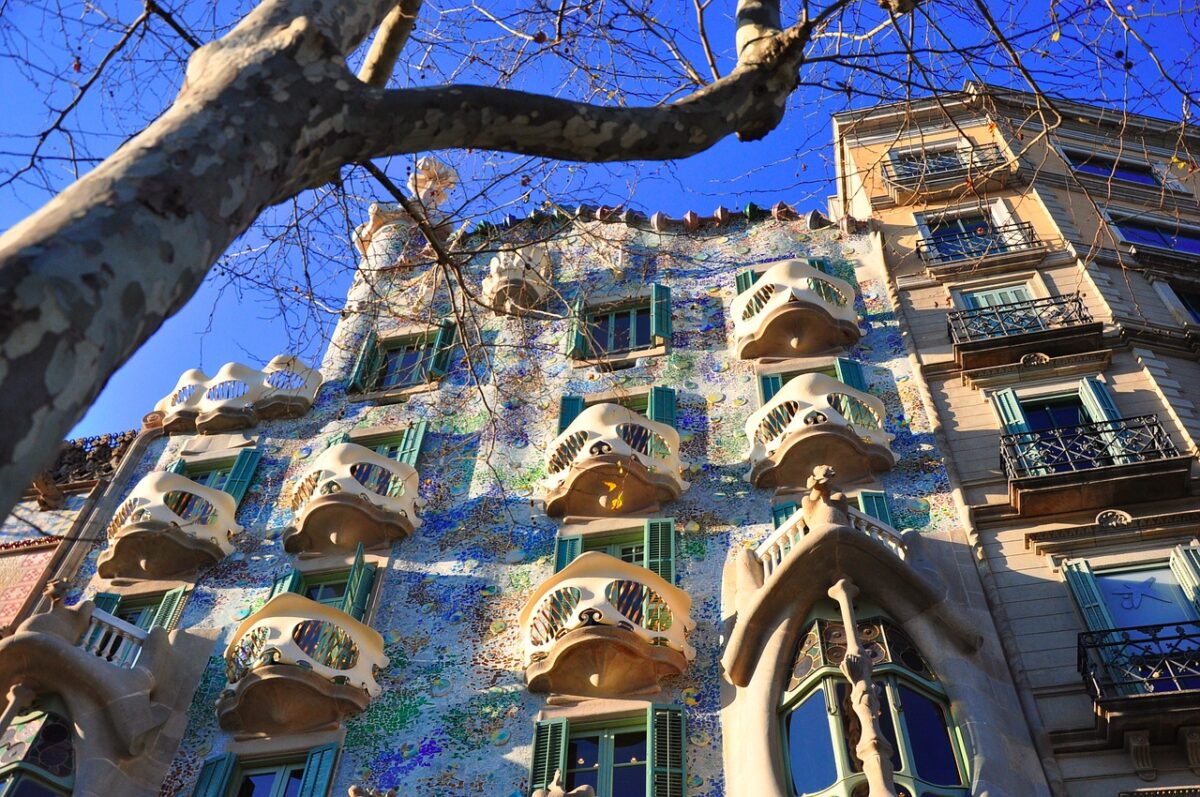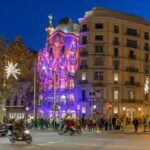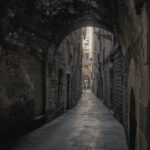If you’re planning a trip to Barcelona, Casa Batlló is a must-see attraction. Considered one of Antoni Gaudí’s masterpieces and a symbol of Catalan modernism, this stunning building is located at 43 Passeig de Gracia and is known around the world for its unique architectural style. Here are some lesser-known facts about Casa Batlló that will make your visit even more special:
1 – The building is not original from Gaudí: The building was built in 1875 by the architect Emiliano Sala Cortés, who had also been one of Gaudí’s teachers. In 1903, Josep Batlló, a businessman with several textile factories in Barcelona, acquired the building. He commissioned the remodeling of it to Gaudí, who was already quite well-known. At that time he was working on the Sagrada Familia, the Bellesguard Tower and the Park Güell. Upon seeing the great change, Batlló was so impressed that he recommended Gaudí to his friend Pedro Milà, for whom the architect later built the Casa Milà, known as La Pedrera.
2- Marine inspiration: Within the great natural inspiration, Gaudí focused mainly on the marine world. That is why the interior areas of the building can remind us of it.
3- The interior of an animal: In the same line, we can also find references to living organisms. In some cases, going through the house gives the feeling of being inside an animal, for example with the catenary arches, which resemble the inside of a whale’s belly.
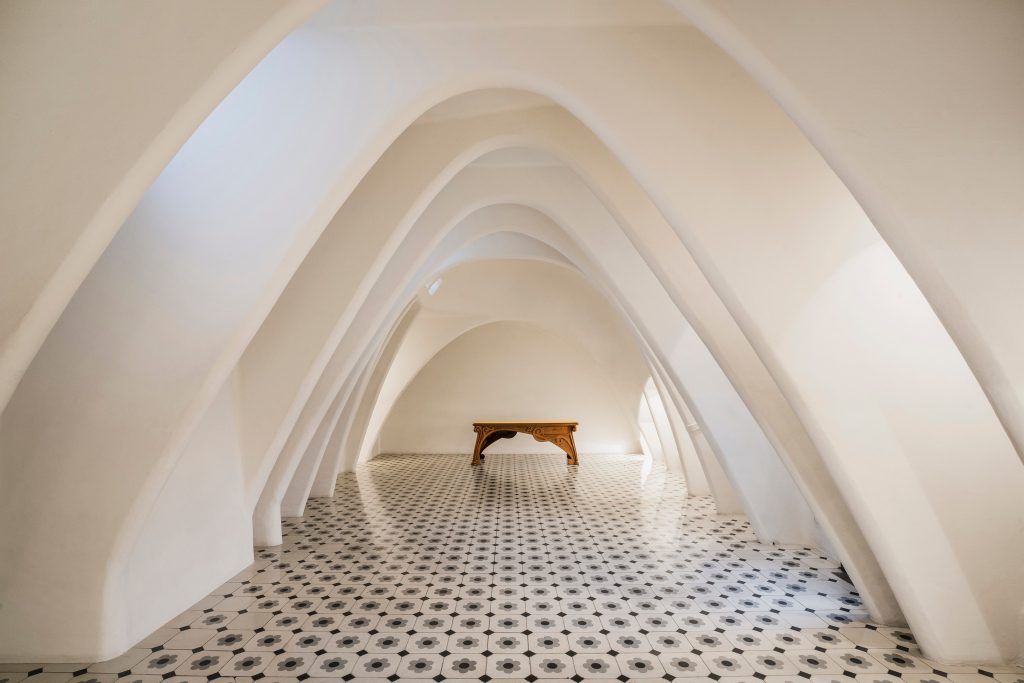
4- The House of the Dragon: But if one animal stands out above all others, it is the dragon. The Casa Batlló is associated with the legend of Saint George, the patron saint of Catalonia, who killed the dragon to save the princess. If you observe the facade, you will see that the tiles that crown the building and the general shape of the roof resemble the back of a dragon.
5- Wavy facade: Although many have not noticed, the facade is wavy. This creates very special effects that give even more originality and magic to the house.
6- Unique Roof Design: The roof of the Casa Batlló is one of its most striking features. Gaudi created a design that mimics the undulating waves of the sea, complete with a colorful mosaic of blue, green, and gold. The roof also features a central skylight that lets in natural light and provides an amazing view of the sky.
7- Pioneer in recycling: The technique for which Gaudí is most known is that of trencadís. It is obtained from pieces of glass and ceramic waste. That is why he is considered a pioneer in recycling.
8- Balconies: The balconies are one of the great mysteries of most visitors. What do you see? Each person seems to see something different, but especially stand out the options of skeletons, Venetian masks and turtles.
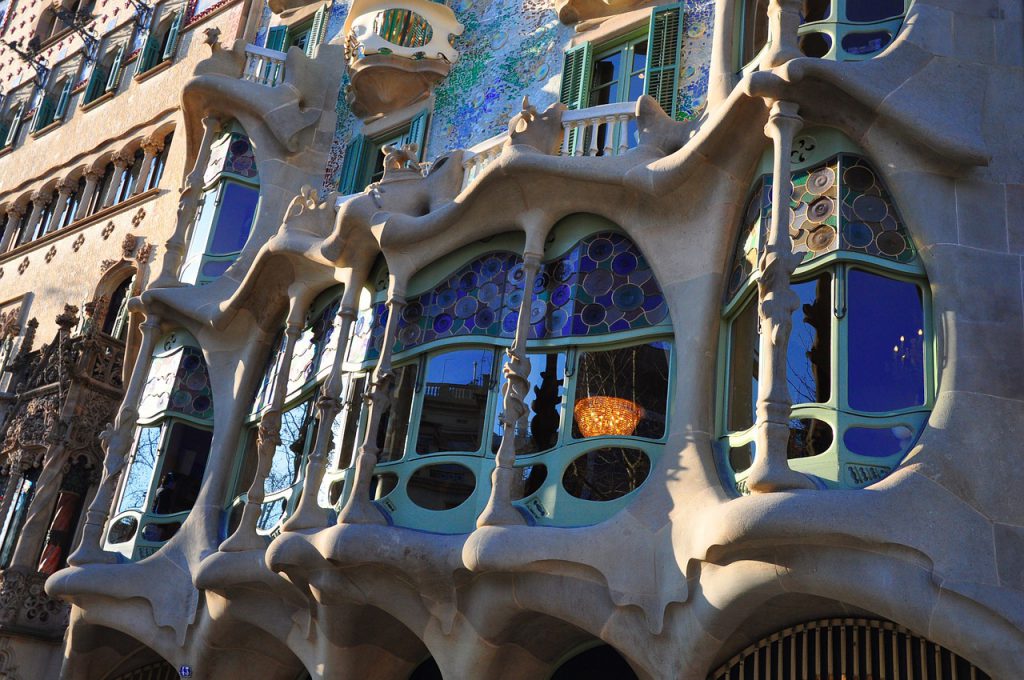
9- The Mysterious Chimneys: Another interesting feature of the Casa Batlló is its chimneys. Gaudí designed these chimneys in the shape of animal bones, which adds to the overall organic feel of the building. Some say that the chimneys are meant to resemble the spine of a dragon, while others suggest they symbolize the ribs of a ship.
10- Natural lighting system: Gaudí worked to make the Casa Batlló very bright. He achieved this thanks to the skylight and the central patios. From there, natural light is distributed.
11- Efficient ventilation: But that’s not all, he also created a ventilation system from different openings that are manually activated in the windows of the house and that allow to regulate the air without the need to fully open the windows. The central patios also play a fundamental role, as they help to preserve heat in winter and ventilate in summer.
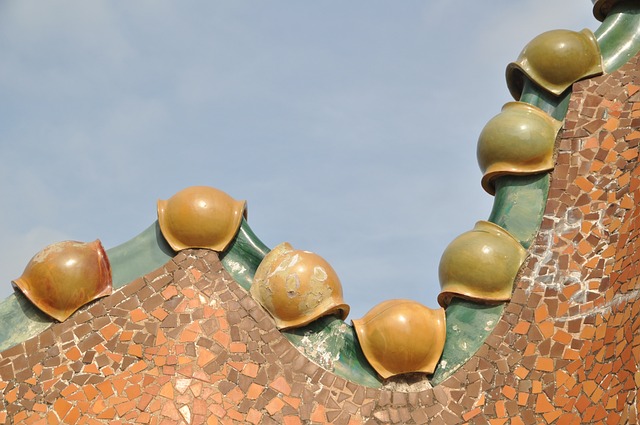
12- The furniture, also by Gaudí: Part of the furniture was designed by Gaudí, with his unmistakable signature. You can find chairs, benches, showcases or doors that bear his signature.
13- The Apple of Discord: The stretch of Paseo de Gracia where the Casa Batlló is located is known as “the apple of discord”. And it is that it is accompanied by other very important buildings: Casa Amatller, by Josep Puig i Cadafalch, Casa Lleó Morera, by Lluís Domènech i Montaner, Casa Mulleras, by Enric Sagnier and Casa Josefina Bonet, by Marcel·li Coquillat. The name “discord” comes from the great professional rivalry between the great architects of the area.
14- Not a winner: Casa Batlló didn’t win the first prize when it was presented in a contest. Instead, the Colegio Condal by Bonaventura Bassegoda i Amigó took the top spot.
15- An Insurance Company: In 1954, the Casa Batlló was sold to Seguros Iberia, which used it as commercial offices. In 1993, it was acquired by the Bernat family, who own the Chupa Chups company and restored it before opening it to the public.
16- Sant Jordi’s Day: April 23rd is a special day for Casa Batlló, as the facade is filled with roses (symbol of the day) and two of its rooms are decorated with red petals that seem to fall from the ceiling. In recent years, exhibitions have also been held on this special date.
17- The Secret Garden: The Casa Batlló has a secret garden located on the roof, which is accessible via a spiral staircase. The garden is a peaceful retreat that offers stunning views of the city and is a perfect place to relax and escape the hustle and bustle of the city.
18- The Stained Glass Windows: The Casa Batlló features beautiful stained glass windows that add to the overall beauty and magic of the building. These windows are designed to let in natural light and create a warm and inviting atmosphere.
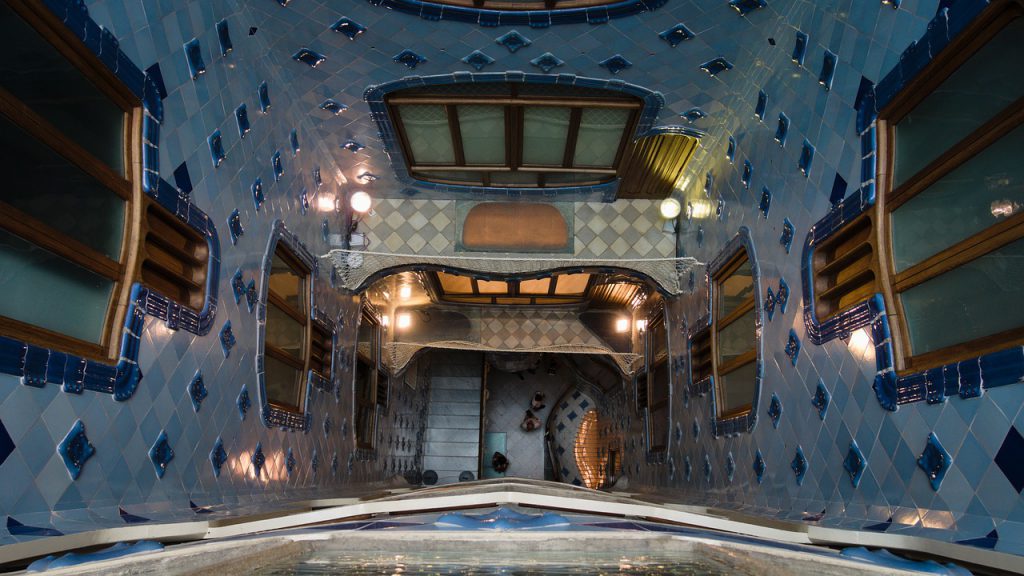
19- The Colorful Tiles: The Casa Batlló is covered in colorful tiles, which is a common feature of Gaudi’s architecture. These tiles are made from a variety of materials, including ceramics and glass, and are used to create intricate patterns and designs that are unique to the building.
20- Gaudi’s Handprints: If you look closely at the Casa Batlló, you can find Gaudi’s handprints on some of the walls and columns. This is a tradition that dates back to the Middle Ages, where craftsmen would leave their handprints on their creations as a sign of their pride and ownership.



